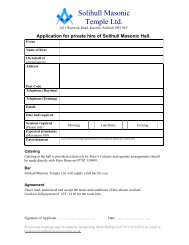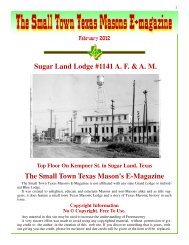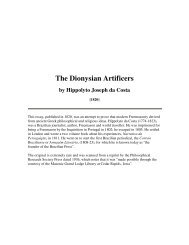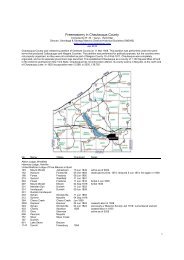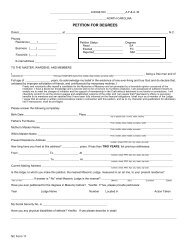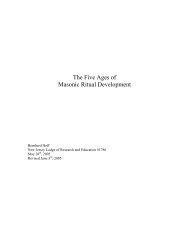1 PETER STUART NEY FREEMASON, MARSHAL OF NAPOLEON ...
1 PETER STUART NEY FREEMASON, MARSHAL OF NAPOLEON ...
1 PETER STUART NEY FREEMASON, MARSHAL OF NAPOLEON ...
Create successful ePaper yourself
Turn your PDF publications into a flip-book with our unique Google optimized e-Paper software.
4<br />
officers to Quebec, Britain’s French - speaking province in North America. He was<br />
unsuccessful as George IV refused any official participation in such a plan. Another way<br />
would have to be found to save Marshal Ney and the others.<br />
Within a few days of returning to France from Britain, Talleyrand boarded a ship<br />
for America. While in Philadelphia he visited the grave of Benjamin Franklin to pay his<br />
respects. The time had finally come for repayment of a debt involving Franklin’s fellow<br />
Masons of St. John’s Lodge in Philadelphia. During Franklin’s nine year stay in France,<br />
as the first U.S. ambassador to France, and became very popular with the French people.<br />
He was active in Nine Sisters Lodge, where arrangements had been worked out in private<br />
for military assistance during the War of Independence. The Masonic kindness<br />
experienced by Franklin many years before would now be reciprocated in Philadelphia.<br />
And so, with the assistance of St. John’s Lodge members, numerous French military<br />
officers would be helped to enter the United States at Baltimore and Philadelphia. Then<br />
they would disappear into the countryside, most likely in the French - speaking areas of<br />
South Carolina and Louisiana.<br />
In January, 1816, a man who gave his name as Peter Stuart Ney landed at<br />
Charleston, South Carolina. Some French refugees reported that they saw Peter Stuart<br />
Ney at Georgetown in 1819 and recognized him as Marshal Ney. As soon as Ney heard<br />
this he left Georgetown. He taught school in Brownsville, South Carolina in 1821. He<br />
then went to Mocksville, North Carolina and taught there and in other North Carolina<br />
towns including Hillsborough, Salisbury, and Third Creek until 1828.<br />
Peter Stuart Ney’s decision to settle in rural North Carolina suggests he may have<br />
been looking for a low profile existence in America. He eventually made his way into<br />
Virginia where he taught at Abbeyville, in Mechlenburg County.<br />
While he was in the Third Creek area, he was a frequent visitor to the large parklike<br />
yard of the church where he would watch the local militiamen drill. On occasion, he<br />
would show young officers how to use a sword and would drill and run through<br />
maneuvers with them in a way far superior to their own officers.<br />
On a particular day at the green, Ney took an officer’s sword and made mention<br />
that a good sword should bend double. Upon attempting this with the sword, he broke it,<br />
which enraged the officer so, he wanted to fight. Ney picked up a large stick and<br />
declared “You find another sword and I’ll use this stick to teach you a lesson in<br />
manners.” The officer declined Ney’s invitation.<br />
There are a number of stories that can be recounted concerning Ney as he taught<br />
in the Iredell, Rowan, and Davie County areas. Some of these have spurred the legend of<br />
Peter Stuart Ney as Marshal Ney of France, and I will proceed to recount a few of them.<br />
A man named William Sidney Stevenson of Statesville, North Carolina knew<br />
Peter Stuart Ney and in 1840 attended a political meeting in Rowe’s Township, about<br />
nine miles from Statesville. Mr. Stevenson was in the company of Frederick Barr, a


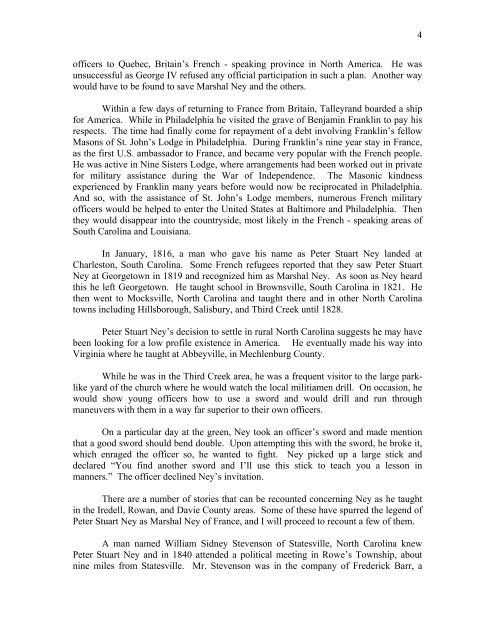
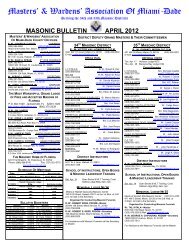
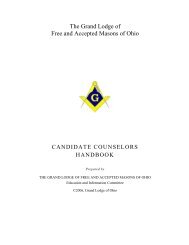
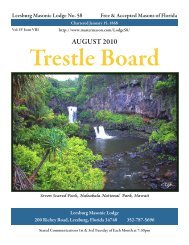

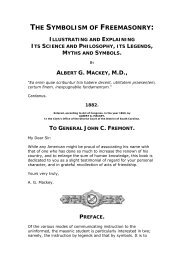

![Junior Grand Warden Views [2005-2] - MasterMason.com](https://img.yumpu.com/36303049/1/190x245/junior-grand-warden-views-2005-2-mastermasoncom.jpg?quality=85)
